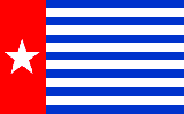An airport in Mulu, Tsinga subdistrict, Timika regency, Papua, has opened access to regions that have so far been isolated due to lack of both land and air transportation facilities in the area.
With a runway of 630 meters in length and 30 meters in width, the airport can accommodate twin otter aircraft.
It is located on top of a hill surrounded by a steep ravine located some 2,000 meters above sea level.
“The airport means a lot to the development of Tsinga and surrounding areas,” said John Magal, a local figure.
With the Piramid and Cartenz peaks as a backdrop, the Mulu airport is erected in an environment surrounded by a steep ravine of dense forest frequently covered with thick fog.
John said the development of the airport, which began in 2007, had been a fulfilling project.
The place, he said, was previously named Naramatei, which literally means a big field.
“It never crossed our minds that someday an airport would really be developed here,” he said.
John expressed hope that the airport would help speed up the development of the tourism industry in the region.
“Tourists wanting to climb the Cartenz peak can fly to Mulu. It takes four days to reach its peak,”
he said.
The airport was developed by giant copper mining company PT Freeport Indonesia to answer the people’s need for transportation and to open access to isolated regions.
“This is part of our commitment to the development program for the three subdistricts of Waa-Banti, Tsinga and Aroanop,” Sonny Kosasih of Freeport said while handing over the airport to the Timika regency administration to operate.
He said the company would also develop another airport in Aroanop.
Timika Regent Klemen Tinal who officially launched the operation of the airport on Friday said the airport was important to local residents as previously it was a four-day trip to the regency capital of Timika on foot. It is only a 15-minute flight.
There are three subdistricts located around the airport with a combined population of around 1,000.
The three are Tsinga, Dolimingongin and Beanegogom.
Jack Dendegou of Tsinga, who is also headmaster of state-run elementary school SD Inpres Tsinga, expressed hope that the airport would bring big changes to the regions as access to the regency capital opened.
“Previously we could only transport food supplies to teachers here twice a year, every January and June. Now we don’t need to wait that long,” he said.
To reach the airport, locals still have to walk on foot for an hour or two. Freeport has planned to build a footpath for better access to the airport.
A ticket to fly from Timika to Mulu and vice versa is priced at Rp 175,000 each per flight, thanks to a subsidy from the local administration.
The subsidized route so far is served by Susi Air twice a week.
